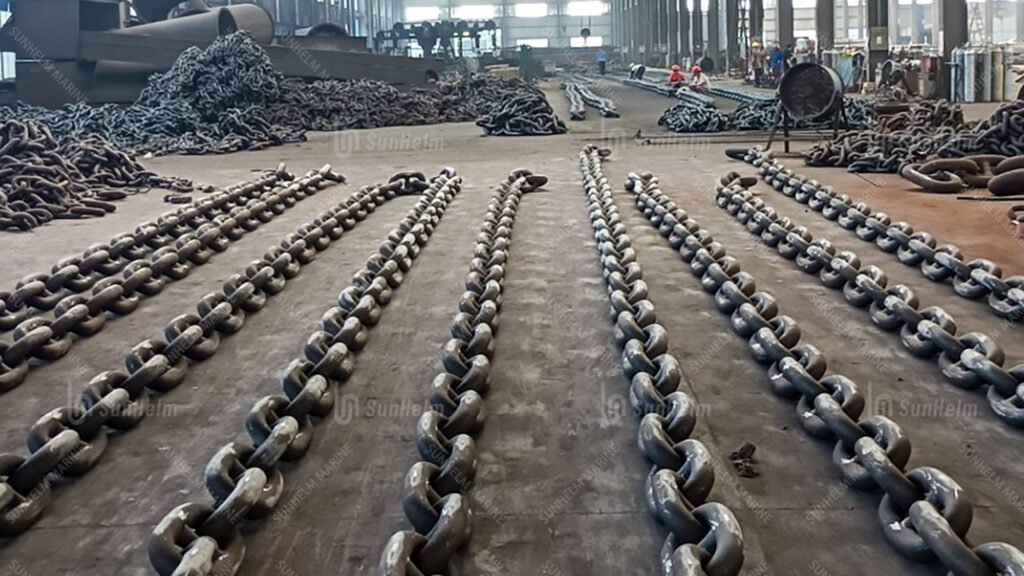Why Proper Anchor Chain Maintenance Is Urgent and Non-Negotiable
In rough seas or crowded anchorages, a rusty or jammed anchor chain can turn a routine evening at anchor into a crisis. Imagine you’re in a sudden squall, water rushing into the locker, and the chain won’t deploy smoothly—your vessel drifts dangerously, or worse, the windlass sags. That’s why anchor chain maintenance isn’t just a chore—it’s a safety imperative. Treating it like dock decor puts you at risk. And if you’re also investing in high-performance cell fenders from Sunhelm to protect your hull, neglecting your chain is like wearing a helmet with no chin strap—it defeats the point.

Quick Anchor Chain Care: Essential Steps
- Rinse with Freshwater After Every Trip: Flush salt, sand, and mud to prevent corrosion.
- Inspect for Wear and Corrosion: Measure link thickness; bent, pitted, or worn links need replacement.
- Rotate Chain Annually: Flip chain end-for-end to even out wear—the inboard end endures most stress.
- Clean Chain Locker: Rinse, ventilate, and let dry to stop rust breeding.
- Service Windlass Gear: Disassemble chain roller, grease axles and clutch pads, and test gearbox & motor integrity.
- Smart De-Rusting Methods: Surface rust is cosmetic—use sand dragging, Ospho spray, or acid rinse if needed.
How to Clean and Lubricate Your Anchor Chain
- Freshwater Hose-Down – After anchoring, wash the chain as it’s retrieved.
- Reverse Drag Through Sand – Let a few extra links drag along the seabed to knock off rust naturally.
- Ospho Bath or Phosphoric Spray – For stubborn rust, this converts surface oxidation without harming galvanizing.
- Optional Acid or Electrolysis – Effective but risky—can strip galvanizing and accelerate corrosion.
- Finish with Cold Galvanizing Paint – Adds an extra protective zinc layer on treated links.
Sunhelm Tip: Match Your Care for Chains with Care for Cell Fenders
As you keep your anchor chain in prime condition, don’t forget your cell fenders—the two work in tandem to safeguard your vessel and berthing structure. Sunhelm’s “SFA Cell Rubber Fender” is engineered for simple installation and low maintenance. They’re built tough to cushion impact, but like your anchor gear, they benefit from regular inspections and cleaning to maintain performance.
How Anchor Chain & Cell Fender Maintenance Align
| Item | Maintenance Routine | Frequency |
|---|---|---|
| Anchor Chain | Freshwater rinse, inspect, rotate, grease windlass | After each use & yearly |
| Cell Fender | Rinse, visual check for compressions or wear | At installation & quarterly |
| Windlass & Roller | Grease, test gearbox, replace clutch pads | Annually |
Keep Reading: Don’t Let Safety Slide Just Because You’re Docked
A neglected chain won’t just shuffle rust around—it may jam your windlass and strand you during a storm. And given how Sunhelm cell fenders ensure a smooth docking experience, wouldn’t you want your anchoring system running just as flawlessly? Dive deeper into our care guide to avoid emergency repairs or expensive replacements.
FAQs
Q: How often should I replace anchor chain links?
A: Replace links that show >10% wear, deep pitting, or deformation. Chain grade standards require limits—swap annual wear data against original specs.
Q: Can surface rust stay on the chain?
A: Yes—minor rust is harmless. Treat severe surface rust with Ospho or fine grit methods. Avoid sandblasting or acid baths unless necessary.
Q: What’s the best way to dry the anchor locker?
A: Rinse, open locker vents, run a fan if needed, and let the chain air dry 24–48 hrs before stowing.
Q: Should I grease the windlass?
A: Definitely. Grease roller axles, clutch pads, gearbox, and check electrical components to prevent binding and ensure reliable operation.
Maintaining your anchor chain with the same care you give your Sunhelm cell fenders ensures every part of your mooring and docking system remains dependable. Regular inspections, targeted cleaning, and smart preventative steps keep your boat—and your peace of mind—secure.


